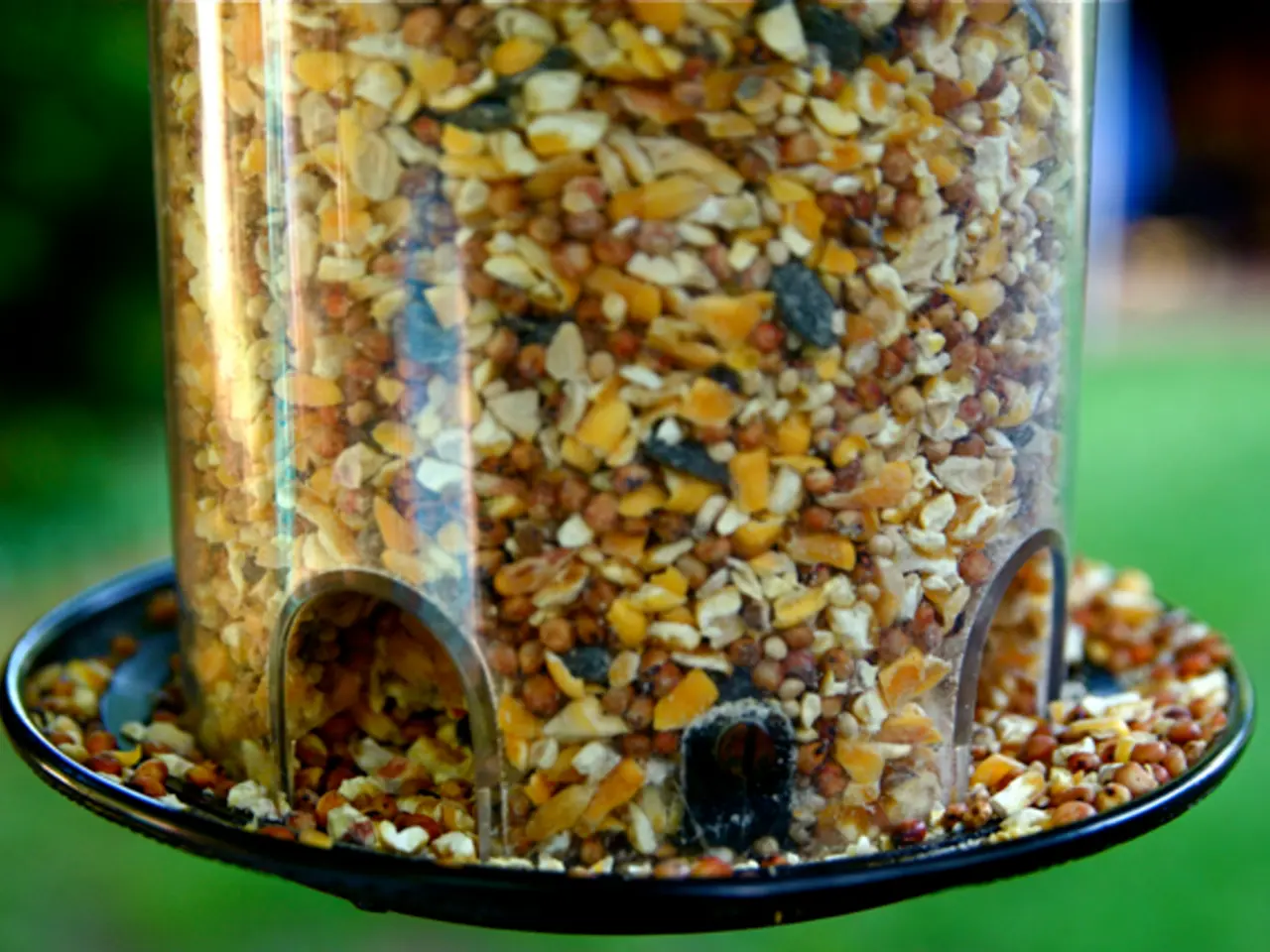Prepare for the Perfect Fermented Snack: Soak, Season, and Sprout!
**Improving Grain Digestion and Blood Sugar Balance: A Comprehensive Guide**
Are you looking to make your grain-based meals healthier and more digestible? By adopting certain preparation methods, you can significantly enhance the nutrient density, digestibility, and blood sugar control of your grains. Here's a guide to the key techniques, supported by research, along with simple recipes and preparation tips.
**Key Preparation Methods for Grains**
1. Soaking and Sprouting: Soaking grains in water for several hours or overnight activates enzymes that reduce phytic acid and other anti-nutrients, improving mineral absorption and digestion. Sprouting further enhances nutrient density and bioavailability by breaking down starches and proteins into simpler forms.
2. Thermal Treatments (Dry Heat and Roasting): Dry heat treatments such as roasting improve protein digestibility by breaking down protein structures and reducing trypsin inhibitors, which are anti-nutrients interfering with digestion. For example, roasting millet significantly improved its protein digestibility, while moist heat (like boiling) had less impact[1].
3. Cooking Techniques to Increase Resistant Starch (RS): Cooking grains with methods that enhance resistant starch content slows starch digestion, leading to better blood sugar control. Techniques include stir-frying freshly steamed rice, baking grains, using lower cooking temperatures, shorter cooking times, and controlling water-to-grain ratios to make starch less digestible, which lowers glycemic index (GI)[3].
4. Chewing Thoroughly and Mindful Eating: Thorough chewing (aiming for 30 chews per bite) and eating slowly improve digestion and reduce blood sugar spikes[2].
**Simple Recipes and Preparation Tips**
- Soaked Quinoa Salad: Soak quinoa overnight, rinse, then cook by boiling or steaming. Mix with roasted vegetables and chickpeas for a fibrous, nutrient-dense meal that supports digestion and stable blood sugar[2]. - Roasted Millet or Barley: Roast millet or barley grains lightly in a dry pan before cooking. This improves digestibility and reduces anti-nutrients[1]. - Rice with Stir-fry: Cook rice by steaming, then stir-fry briefly with vegetables and healthy fats (like olive oil) to increase resistant starch and slow glucose release[3]. - Lentil Soup: Cook lentils with a brief heat treatment to reduce trypsin inhibitors and improve protein digestibility. Combine with whole-wheat bread (in small portions) for balanced fiber and protein[2].
**Nutritional Considerations**
- Combining fibrous vegetables and lean proteins with grains enhances blood sugar stability and nutrient uptake[2]. - Portion control alongside balanced macronutrients (fiber, fat, protein) supports glucose balance, e.g., wedge salad with mixed proteins and fiber[4].
**Summary Chart for Grain Preparation**
| Preparation Method | Purpose | Example | Effects on Digestion & Blood Sugar | |------------------------|--------------------------------------|------------------------|----------------------------------------------------| | Soaking & Sprouting | Reduce anti-nutrients (phytates) | Soaked quinoa, sprouted wheat | Better mineral absorption, easier digestion | | Dry Heat / Roasting | Improve protein digestibility | Roasted millet/barley | Reduced trypsin inhibitors, higher protein availability | | Controlled Cooking | Increase resistant starch | Stir-fried steamed rice, baked grains | Slower starch digestion, lower glycemic index | | Chewing & Mindful Eating | Aid mechanical digestion | General practice | Reduced digestion strain, better blood sugar control |
By combining these preparation methods with mindful eating and balanced meals, you can significantly enhance grain nutrient density, digestibility, and blood sugar control. If you're looking for detailed tutorial videos or charts tailored to specific grains, many nutrition and cooking websites offer step-by-step guides for soaking, sprouting, roasting, and cooking whole grains optimally. Happy cooking!
[1] Source: https://www.ncbi.nlm.nih.gov/pmc/articles/PMC4468283/ [2] Source: https://www.ncbi.nlm.nih.gov/pmc/articles/PMC5664031/ [3] Source: https://www.ncbi.nlm.nih.gov/pmc/articles/PMC4761874/ [4] Source: https://www.ncbi.nlm.nih.gov/pmc/articles/PMC6073476/
- Incorporating healthy-cooking techniques like soaking and sprouting grains can help reduce anti-nutrients and improve mineral absorption, making meal plans healthier for a balanced lifestyle.
- Science reveals that principles from food-and-drink, such as thermal treatments and controlled cooking, can enhance protein digestibility and slow starch digestion for better blood sugar balance, offering new dimensions to health-and-wellness.
- Fitness-and-exercise enthusiasts who value healthy-cooking and a lifestyle that prioritizes health can benefit from incorporating nutrition methods like roasted millet and soaked quinoa into their diet, ensuring a balance of nutrients and digestibility.
- Embracing mindful eating habits in conjunction with a food-and-drink approach that emphasizes fibrous vegetables, lean proteins, and the right portion sizes can lead to improved health and wellness outcomes, reflecting positively on one's health-and-wellness lifestyle.




